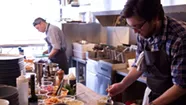
The transition from private ranch to public destination That outbreak is believed to be a factor in the higher incidence of CWD in and near Wind Cave, and in the southern Black Hills. But it featured a captive elk herd that eventually was the source of a chronic wasting disease (CWD) outbreak that led to the entire herd being destroyed and buried at the ranch. It remained a working ranch under the Casey family of Rapid City and Bear Country USA fame. When Carl Sanson sold the ranch, its future was as uncertain as the terrain crossed by the two-track trail. And it does a good job of that, year by year, winter by winter, rainstorm by rainstorm, baking summer after baking summer. And in its day - which means the multiple-decades-long “day” when the ranch was producing livestock and young ranchers - the mile-long stretch of entry road surely was in better shape, although likely never a smooth ride.Īfter Sanson ranch operations stopped in 1987, the surrounding prairie began to further reclaim the road as its own. One of the things that is certain is that the Sanson family operated the ranch from 1882 to 1987. The ranch also features other cultural sites, including stone circles that could be tipi rings, although that isn't quite certain. And relics remain, beneath the surface and occasionally on it. The dead and dying bison would have been thrashing around on the ground while indigenous hunters risked injury or death to finish them, then began an essential slaughtering process needed to sustain the tribal collective. His answer was simple: "Far enough."Īnd standing near the base of the cliff today, you can get a sense for the ferociously physical action that must have ensued there. Seeing the jump for the first time more than a decade ago, I asked Farrell how far the bison fell. About 4,000 years ago indigenous hunters drove bison over the limestone cliff to crash into the creek bed below. They could lose parts of their tranquility, too, which is something you hope to preserve and even enhance by visiting the park, the ranch and the jump.Īnd speaking of the jump, it’s an amazing point of history that lies across the Beaver Creek valley from the old Sanson place. “It started out as a two track, where people could lose parts of their cars.” “This year we’re working to improve that road,” says Tom Farrell, chief of interpretation at Wind Cave. To say nothing of a flat tire, a torn-off muffler or worse. It was the last mile in to the ranch and the first mile out that could turn into a headache, literally.

Instead, it was most of the misery.Īlmost getting there was simple, by way of highway asphalt and well-maintained gravel.


And they really matter, not just to the 33,924-acre park but also to its visitors and to the inventory of educational and historic sites on public land across the United States.įor years, getting there has not been half the fun on a trip to the Sanson Ranch. That’s true, at least, if we define “highway” as a main route of travel to some place that really matters.īecause this is the main route to the Sanson Ranch and Buffalo Jump in Wind Cave National Park. It used to be a bumpy two-track trail that could rattle your composure and damage your undercarriage - the one under your vehicle, of course.īut now it’s becoming a highway to history.


 0 kommentar(er)
0 kommentar(er)
